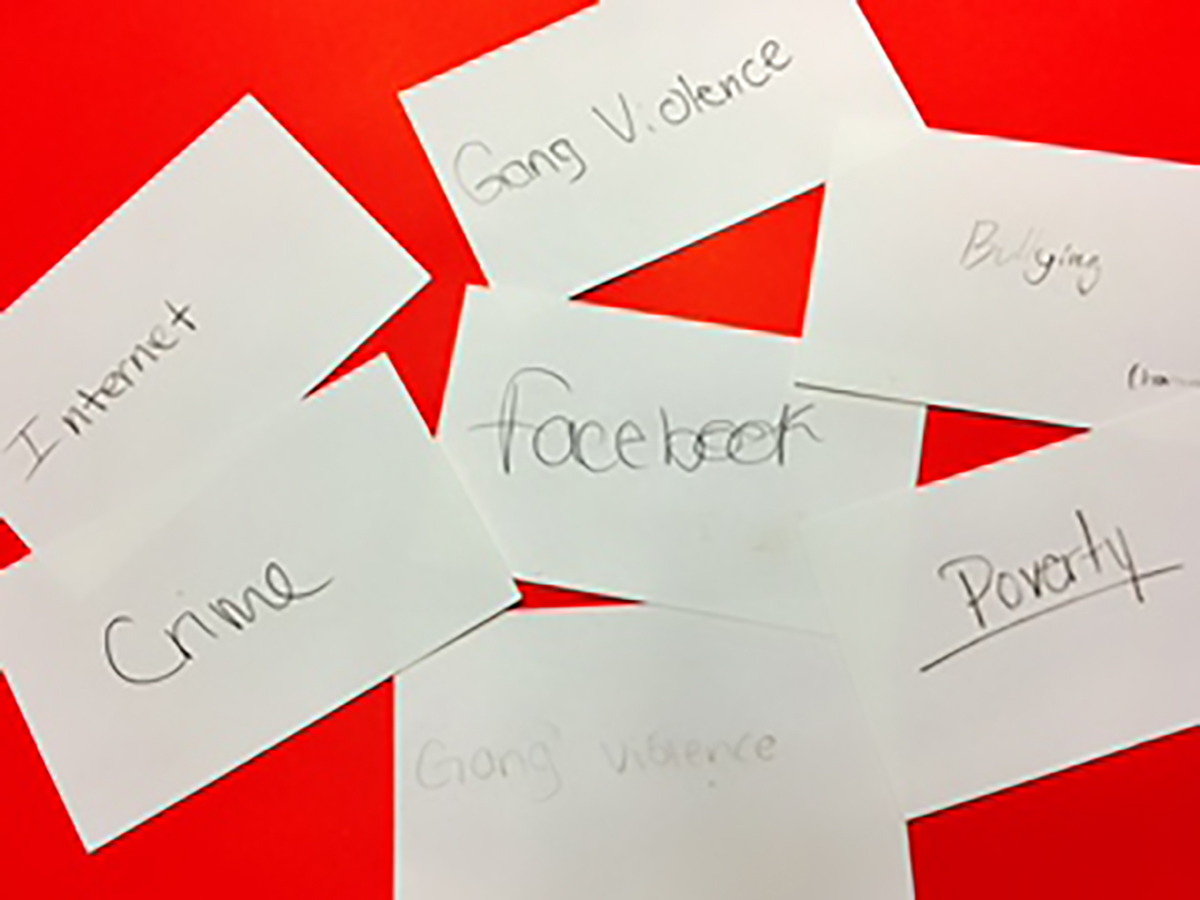Social Media Distraction
By Janeen Hayes
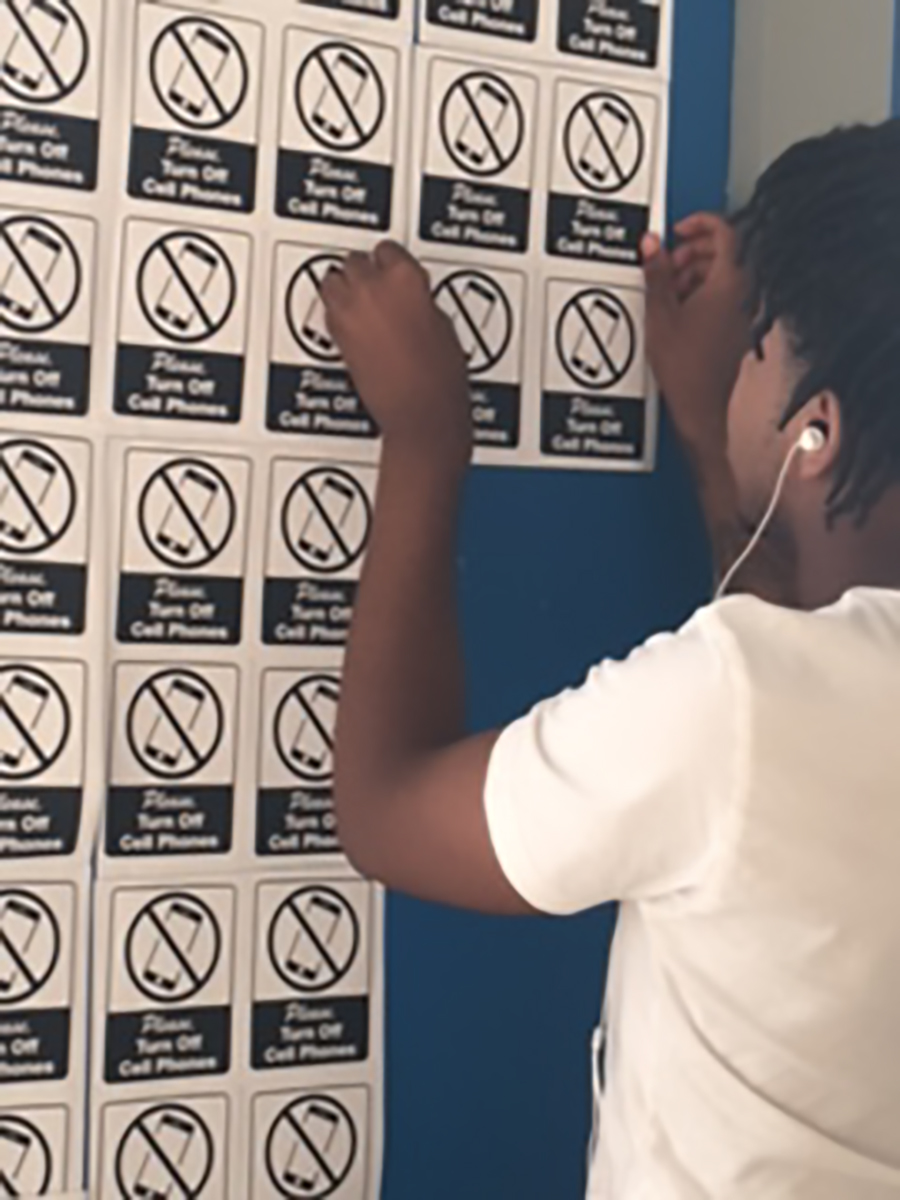
Social media creates impactful distractions that affect student identity, school community, and neighborhood violence. In this project, students were invited to identify a social issue that urgently matters to the school community, and they focused their explorations on the issue of social media. After studying installation artworks and curatorial decision-making at the MCA, students took ownership of a classroom at Tilden High School and converted it into a gallery. In this space, they installed prompts for participation, data visualizations, explanatory texts, and iconographic paintings to engage the Tilden community in a studio arts research space. The outcomes of student research are ongoing, as students continue to accumulate information about the distracting influences of social media.

Goals
- Students create a collaborative project and learn to work as a team.
- Students create art that reflects their personal connection with social media as a social issue they are dealing with personally.
- Students take ownership of the gallery space to express their ideas.
Questions
- Why do we use social media as a distraction?
- How can student identities heal from social media distractions?
- How is social media impacting student relationships?
- What does social media survival mean to students in urban environments?
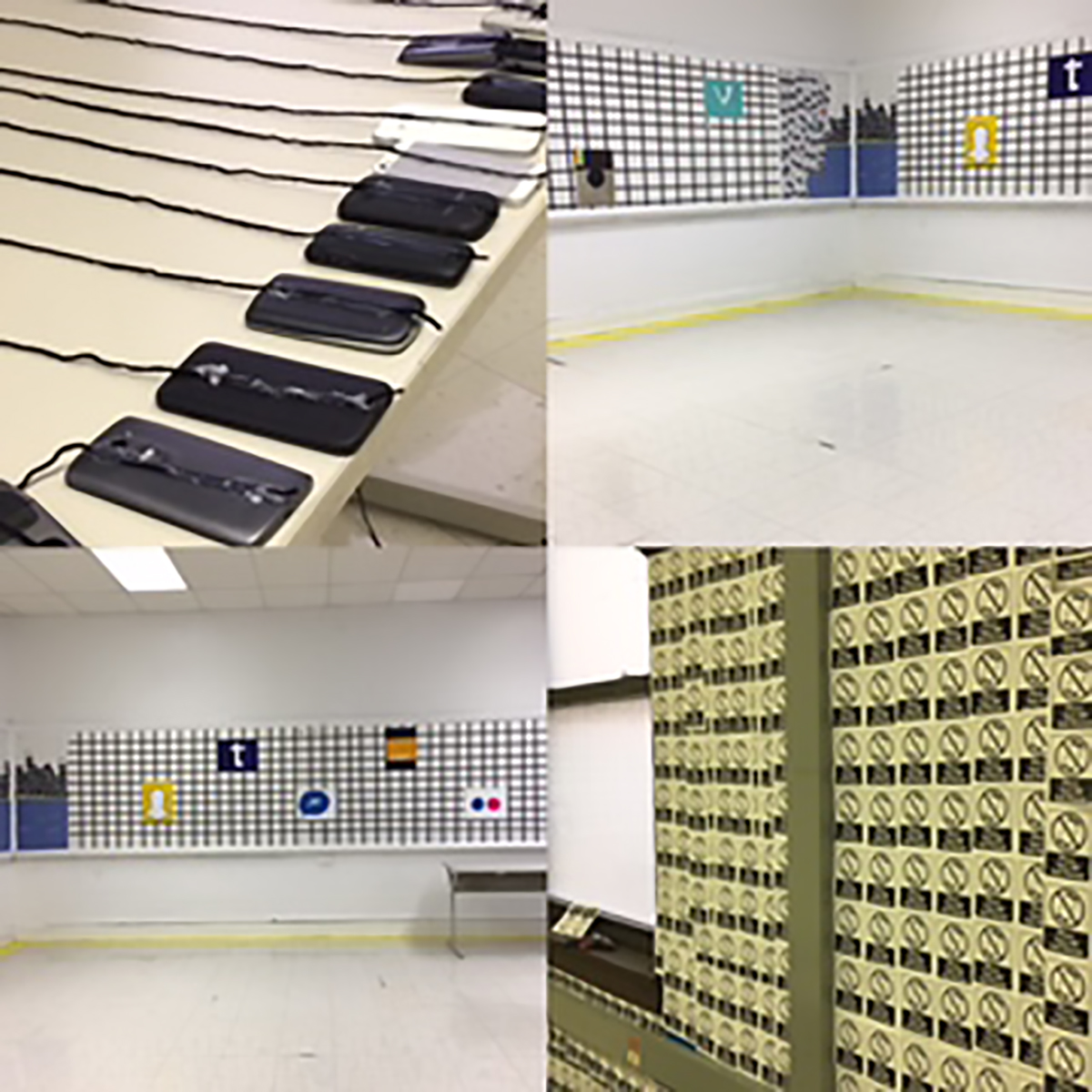
Documentation + Assessment
Our documentation and assessment strategies included
- Photographs of the installation process
- Informational wall text about the installation
- Survey
- Daily index-card reflection on a social media issue
- Students’ social media journals to document actual user habits
- Art installation grid: Quantitative documentation of social media use
Learning Activities
Step 1
Defining the Social Issue that Matters
Guide students through an inquiry-based dialogue about the social issues that affect their lives. Assist students in identifying one issue of greatest urgency.
Step 2
Investigating Available School Space
Introduce available spaces in the school that can be adapted for long-term installation work.
Step 3
Installation Art
Introduce the concept of installation art through examples of contemporary artists who employ materials to transform spaces into interactive artworks.
Step 4
Visit the MCA
Visit the MCA with an eye for installation art, and for the curatorial decisions of placing work in museum galleries. Invite students to analyze why and how artists and curators shape visitor experiences with objects, light, scale, traffic patterns, juxtaposition, proximity of objects, sound, participatory prompts, and other qualities of contemporary installation art.
Step 5
Studio Sketching in the Space
Situate studio explorations in the new dedicated installation site. Offer materials for sketching possible installed works and support brainstorming community engagement strategies.
Step 6
Social Media as Unifying Theme
Lead a critical dialogue about the role of social media in student lives. How can student identities heal from social media distractions? How is social media impacting your relationships? What is social media survival?
Step 7
Planning the Space
Lead students in studio activities to develop an implementable and unified plan for enlisting the direct participation of community members in exploring the role of social media in their lives.
Step 8
Preparing the Space
Neutralize the dedicated installation room so that it is completely cleared of all former resemblances to a classroom and install initial participatory prompts. Install informational texts about the installation and its artists.
Step 9
Symbolize the Process through Paint
Lead a supporting tangential studio project with paint on canvas. Ask students to create an icon that symbolizes the summary of the work so far. Include feelings and thoughts about social media, about installation artwork, and about the participatory data that is emerging.
Step 10
The Continuing Cycle from Installation to Studio to Installation
Install the symbolic icon paintings in the installation space in order to provoke new participation. Then, reflect on that participation in the studio, and continue the practice pattern of bringing studio works informed by participants’ contributions back to the installation.
Step 11
Reflect together
Lead students in critical dialogue about what they are learning about the social media practices of themselves and others, and reflect on whether this participatory artistic research may influence their future social media practices.
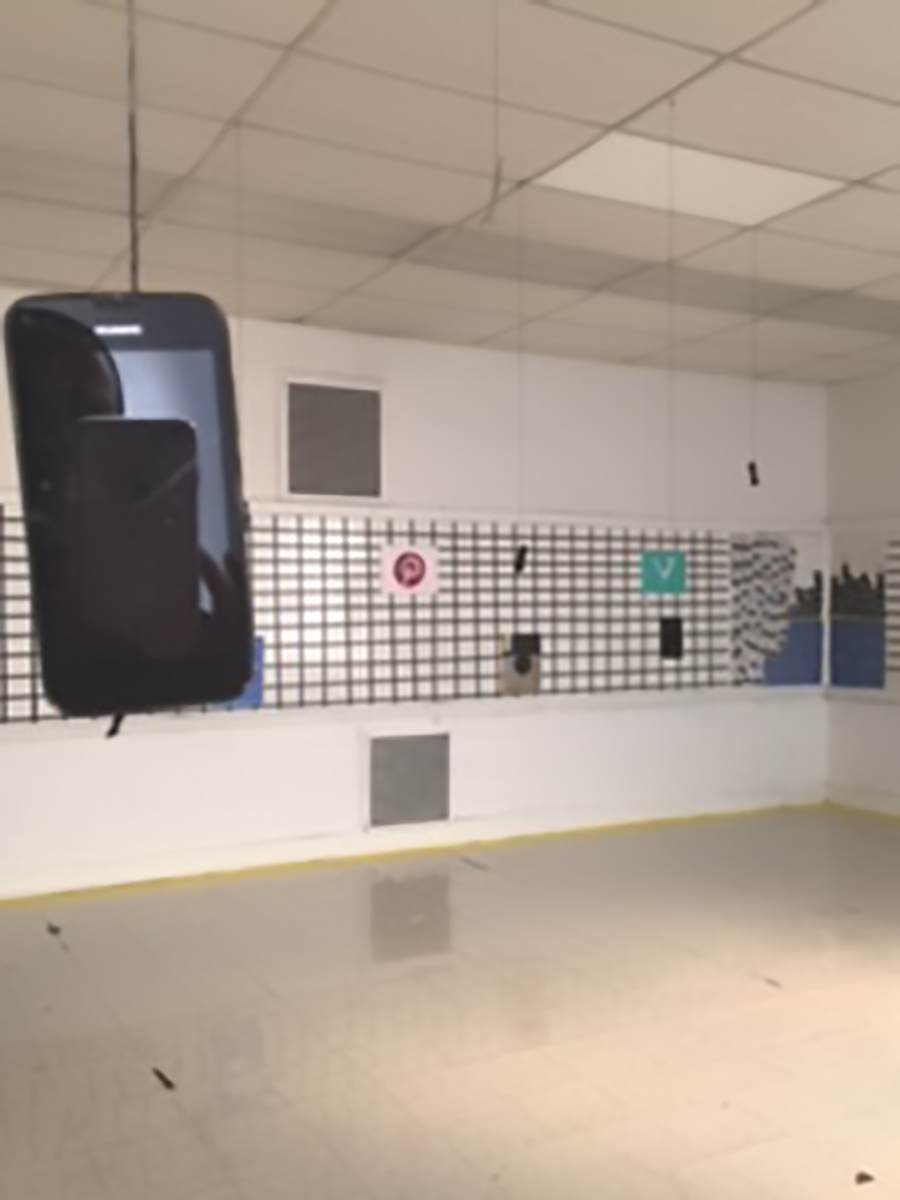
Materials
- An available classroom space within the school, or other room within the school, preferably with a door that can be locked to keep student work safe
- Sculptural materials, as needed, for building student-directed installations
- Painting materials and grounds
- Computers and printers for creating surveys and wall labels
MCA Connections
Kerry James Marshall, Baobab Ensemble (2003)
Students used this piece as a reference for creating an art installation, because it shows how the audience can interact and become part of the art space. This space encouraged reflection and connection, and my students wanted to create a similar feeling in a space, but using the theme of social media distraction. The students had to experience contemporary art that involves the viewer as an active participant in creating the artist’s concept. My students explored socially engaged art by having an experience.
Kerry James Marshall, Lost Boys (1993)
My students analyzed this painting as a way to discuss the conditions of communities. I wanted students to relate to a work of art created by an African American artist living in Chicago who created paintings to reflect his experience within a community. My hope was for the students to create work that expresses their connections with community. Discussing the violence in this painting, students made connections with how the violence in their communities can now get started through social media or be viewed on social media.
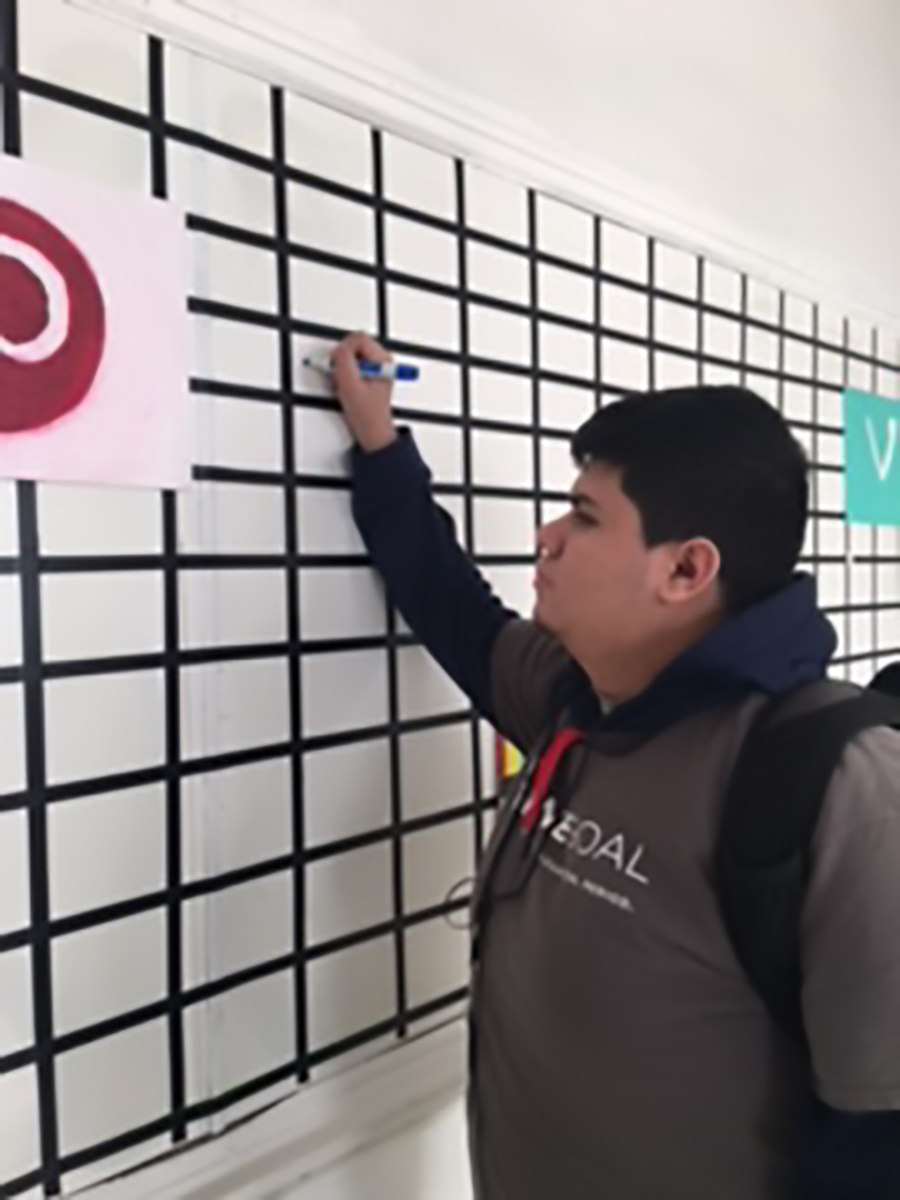
References + Resources
- Works from Making of a Fugitive exhibit at the MCA, in particular Huang Ngo's Escape Survival Manual, 2004
- Video/Discussion about “4 teens Held in Connection with Kidnapping after ‘Facebook Live’ Torture Video Airs"
Janeen Hayes
Edward Tilden High School
Janeen Hayes is a visual art teacher and artist who explores photography and mixed media techniques in her practice. Janeen has been teaching art for 16 years and, for most of this time, Janeen has worked with a population of students who face daily traumatic and stressful community issues. In response to the psychological states of an increasing number of her students, Janeen has focused her teaching pedagogy on lessons and ideas that involve social and emotional learning through artmaking. Janeen is interested in the integration of non-traditional art therapy practices with contemporary art. Janeen’s experience working with students facing homelessness, abandonment, abuse, and death has impacted her personal journey as both an artist and a teacher. Janeen is interested in creating spaces for healing. In 2008, Janeen presented an interdisciplinary installation at Columbia College, a collaboration with her students that identified individual perceptions about the bureaucracy in public education. Such collaborations with students are the focus and inspiration for Janeen as an artist and educator.
Janeen reflects on her process:
In the process of guiding students through analyzing contemporary art and creating a socially engaged installation about social media distractions, I have come to understand how my students use social media as a means of connection within, and distraction from, their lives. The students are aware of how they use cell phones as a way to survive and navigate school conflicts and community issues that arise on social media and play out in real life. By allowing the students to create the theme for this work, I began to see how students can develop a reflective response to their involvement with social media. Students began to understand different ways the school community can be affected in both good and negative ways by social media.
I hope that those in the Tilden community who got to see the installation created by the students were engaged to participate in being reflective and honest about how much they use social media, and the reasons why they are using social media.
This project was not about a critique of social media, but was about an examination of social media used as a tool of survival.
Social Media gives people a sense of false power. Those who don’t have privilege use social media to be heard, express pain, hide, cope, distract, create false identities, and connect. This can manifest in many different ways. Social media is the issue in their community that students chose to address. I was surprised at first by the selection, but as time has gone on, and with current events in the city, I believe students’ interpretations of how social media affects a community were correct. Students displayed a self-awareness that was honest and truthful when they talked about how social media impacts their lives and people in their communities.
